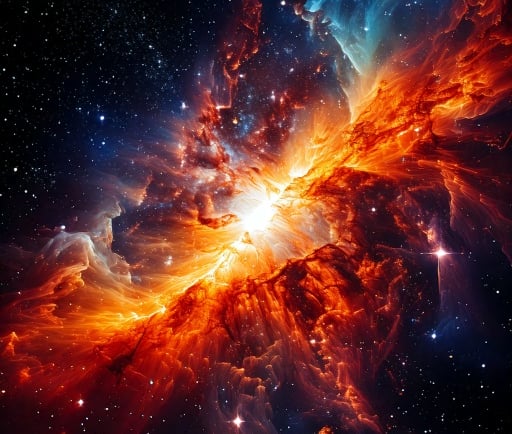The Flaming Star Nebula: A Reflection of its Formation


Introduction to the Flaming Star Nebula
The Flaming Star Nebula, also known as IC 405, is a captivating celestial phenomenon formed by clouds and interstellar dust. Located approximately 1,500 light-years away in the constellation of Auriga, this striking nebula serves as a beautiful example of reflection nebulae. In this post, we will delve into the intricate details of the Flaming Star Nebula, focusing on the way it reflects the light from shining nearby stars, creating a spectacular display of colors.
The Formation of Reflection Nebulae
Reflection nebulae, such as the Flaming Star Nebula, are typically composed of gas and dust. Also, with emission nebulae that generate their own light through ionization, reflection nebulae act like mirrors, reflecting the light from surrounding stars. The Flaming Star Nebula, the light emitted by the nearby star AE Aurigae illuminates the dust particles that populate the nebula. This interaction results in a mesmerizing blend of light and shadow, bringing forth a visual treat for both amateur stargazers and seasoned astronomers alike.
The Visual Impact and Significance of the Nebula
The Flaming Star Nebula is particularly notable for its vibrant colors and dynamic structure. The bluish tint, characteristic of many reflection nebulae, is primarily due to the scattering of light by small dust particles, a phenomenon similar to why the sky appears blue during the day. The immense beauty of the Flaming Star Nebula not only attracts astrophotographers but also plays an essential role in the study of stellar birth and evolution. Understanding the properties of such nebulae helps scientists gather information regarding star formation processes, as regions of dense dust may serve as stellar nurseries for new stars.
Researchers continue to explore how surrounding gravitational forces and the materials present in these nebulae affect the emergence of new stars. In addition, the Flaming Star Nebula represents a rich area for exploration in terms of discovering the chemical makeup of interstellar clouds and the cosmic dust involved in star formation.
Conclusion
In summary, the Flaming Star Nebula stands as a testament to the beauty and complexity of our universe. Reflecting the light of nearby stars through interactions with interstellar dust, this nebula provides a unique insight into the processes of star formation and the nature of reflection nebulae. As we further our understanding of these astounding celestial phenomena, we cultivate a greater appreciation for the intricacies of the cosmos that shapes our night sky.
